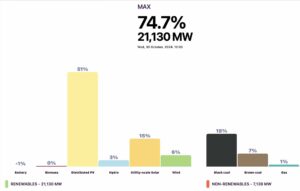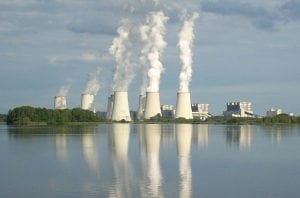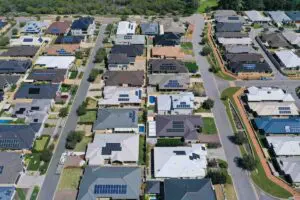What’s that you say? Australia has ‘clean coal power stations’?
Well, it depends how you define ‘clean coal’. Most power sector observers eschew the phrase because frankly it’s misleading. No technology exists that allows coal to be used without adding carbon pollution to the atmosphere — however the Australian Government and the Australian coal sector use the term ‘clean coal’ to refer to two technologies:
- High Efficiency, Low Emissions (HELE) coal plants — ie. those using supercritical, ultra-supercritical and ‘advanced ultra-supercritical’ technology.
- Carbon Capture and Storage/Sequestration (CCS) — ie. various technologies to capture a plant’s CO2 emissions and store it permanently underground.
There are no CCS power stations in Australia. In fact there are (generously) only three in the world, and given the massive costs and time required to build, I’d happily wager that we won’t see any in Australia any decade soon. (See my answer to How many CCS electricity generators are operational globally? How much CO2 do they sequester annually, and at what cost?)
However we do have four HELE power stations in Australia, all are in Queensland and burn black coal with super-critical steam technology:
Together the Australia ‘Clean Coal’ fleet makes up 14.1% of all black coal power generation.
To put the emissions intensity numbers into context, we can compare the ‘Clean Coal’ fleet against black coal power stations using older sub-critical steam technology.
nb. For this comparison I’ve excluded the three brown coal power stations in Victoria — Loy Yang A, Loy Yang B and Yallourn — as there are no brown coal HELE plants in Australia.
We have 14 non-HELE power stations that burn black coal:

The average emissions intensity (weighted by electricity production) for the two technologies are:
- super-critical, or HELE (‘clean coal’) — 919 kg CO2-e/MWh
- subcritical, or non-HELE — 1011 kg CO2-e/MWh.
Therefore Australian power stations fitted with ‘Clean Coal’ technology emit 9.95% less pollution than stations burning the same fuel with regular sub-critical technology.
For those lost in the numbers, perhaps it’s better to show this graphically. The chart below shows the intensity of each Australian black-coal fired power station plotted against its year of construction. The larger the dot, the greater the energy produced in the sample year (2015-16). The green dots represent Australia’s four HELE power stations.
But isn’t HELE supposed to be a part of Australia’s energy solution?
So we are told. The table below underpins much of the enthusiasm by the government and the coal sector:
It’s worth noting:
- None of Australia’s HELE plants fall within the 800–880g CO2/kWh (equivalent to 800–880kg CO2/MWh) range. This is most likely due to the discrepancy between ‘sent out’ and ‘as generated’ energy, as mentioned above.
- Comparing the CO2 intensities for subcritical and supercritical technologies listed in the table, we see that super-critical plants are approximately 9.5% more efficient. This is reassuringly in line with the Australian empirical data.
So what about ultra-supercritical and advanced ultra-supercritical?
China leads the world with ultra-supercritical technology — 19% of current coal generation capacity and 58% of coal generation capacity under construction is using the technology, yet outside of China the take up is much lower: 4% of operating capacity and less than one third (29%) of capacity under construction.
India’s has just 600 MW of ultra-supercritical capacity under construction.
There’s only one ultra-supercritical power station in North America, the John W. Turk Jr. power station in Arkansas. At US$1.8bn for a relatively small 600 MW plant, the Turk power stations is the most expensive power project ever built in the state. As well as being the first ultra-supercritical plant on the continent, it currently holds the dubious distinction of being the last, at least for the time being.
The ultra-supercritical Unit 3 of the Danish Nordjylland Power Station claims to hold the world record for most efficient coal utilisation. Interestingly, Australia has built five coal power stations since Nordjylland was commissioned and none have used ultra-supercritical technology.
Perhaps the main reason we haven’t seen ultra-supercritical technology applied more widely, and not at all in Australia, is that the technology costs 20–30% more than subcritical technology. Except in regions with very high coal costs — or very high carbon pricing — the economics simply don’t stack up.
So what of advanced ultra-supercritical technology?
Advanced ultra-supercritical is still in the early stages of research and development. Exotic and expensive materials are required to withstand the significant increase in temperature and pressure.
The Technology Readiness Level (TRL) methodology is an widely used benchmarking tool originating at NASA for “tracking progress and supporting development of a specific technology through the early stages of the technology development chain, from blue sky research (TRL1) to actual system demonstration over the full range of expected conditions (TRL9).”
The chart above lays out the TRL and Commerical Readiness Index (CRI) as adapted by the Australian Government.
Any capital intensive technology will not find mass adoption until it is ‘bankable’, but first it must move through the TRL scale and ultimately up the CRI scale.
India is investing US$230m in advanced ultra-supercritical R&D and hopes to have a demonstration plant up and going by the end of the decade. It’s fair to say that advanced ultra-supercritical is still at the low end of the TRL scale and when each implementation can cost well in excess of $1bn, the path through technology readiness to commercial readiness will require decades of patient investment.
Between 2011 and 2014, a US Department of Energy funded trial demonstrated 17,000 hours of operation of advanced ultra-supercritical temperatures and pressure on Unit 4 of the James M. Barry Electric Generating Plant in Alabama.
As well as the US and Indian research, Japan and and the EU have invested in advanced ultra-supercritical research and development.
However the economics are unconvincing and getting worse. Massive investment is required to make a technology that is marginally less polluting but more expensive than current coal technology — a technology that is being undercut by renewable energy by ever increasing margins.
Coal power generation in Australia has peaked and there are many reasons (beyond the scope of this piece) why the decline is terminal.
HELE has been touted by some as the saviour of the coal generation sector, yet the technology’s only hope for a strong future is very high carbon pricing. Somewhat ironically, the key cheerleaders for HELE — the Australian Government and the coal industry — have been the lead players in killing off all efforts to properly price carbon pollution.













